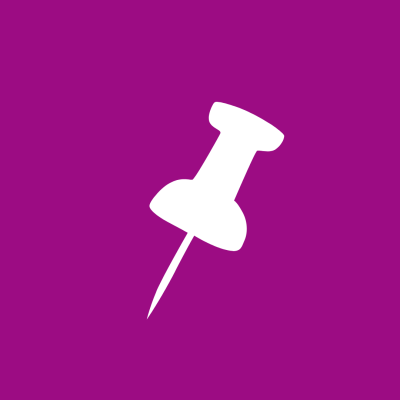All Things Admin Joins ASAP. Learn More ›
An Admin’s Guide to Travel Planning
October 22, 2015

These best practices will help make the travel planning process before, during and after a trip as simple and stress-free as possible.
Develop travel planning templates and checklists
My travel planning documents are some of the most useful tools in the travel planning process. One of my main motivations for creating a lot of these travel forms, templates, and checklists is because I forgot (or was afraid I would forget) an important detail in the travel planning process. In these instances, I was forced to resolve issues on the fly as my executive was checking into a hotel, boarding a plane, or renting a car. It was stressful for my executive and me, so I sought out ways to prevent mistakes or oversights from happening again.
The primary documents I developed to keep me on track include: a traveler profile form, a travel planning intake checklist, and a travel itinerary template.
Traveler profile form
The traveler profile form is a single page document that includes all of the contact information for each traveler I supported. It includes their name, title, employee ID and other related work contact details, as well as their home contact information. The form has a section for airline preferences, including frequent flier numbers and status, seat preferences, and meal requests. There are also sections for car rental memberships, hotel preferences, and passport and citizenship details. This was a helpful form for my travel agent and any assistants who filled in for me while I was out of the office.
Traveler planning intake checklist
The travel planning intake checklist is a multiple page form that includes sections for commercial or charter flight arrangements, ground transportation, hotel accommodations, dining reservations, meeting or event details, and room for additional notes. Each section also includes related details that need to be handled, and specific questions to ask the traveler to ensure all of the relevant information is successfully captured. This checklist kept me on top of all of the details related to each trip my executive took.
Travel itinerary template
The travel itinerary template is the ultimate document in summarizing, verifying and creating order out of all of the planning details. To effectively organize all the details, you need a travel itinerary template that you use consistently. Don’t ask your travelers if they want one – just do it! You’ll save them a lot of time and hassle in sorting through multiple documents or scrolling through multiple emails to find the information they need while they are traveling.
If you haven’t done a lot of travel planning, one of the first things I encourage you to do is think chronologically. What is the order of events for your traveler throughout their trip? This will help you get all of the necessary arrangements made from the start (flights, ground transportation, hotel, meals, meetings etc).
If you need some help getting started, download my travel itinerary template at www.AllThingsAdmin.com/free-templates. It’s designed to cover all of the basic details that need to be included on an itinerary for a traveling executive. Not every trip requires airline travel. Not every trip requires rental cars. It may change from trip to trip and traveler to traveler. Remain flexible. Customize your template to make it fit your executive’s specific travel needs.
Another great tip is to treat the compilation of the itinerary as though you are the traveler. Include all the traditional information, such as flight, hotel, and car rental details, as well as additional, useful information, including driving directions, dining options, and entertainment venues.
Even if your executive prefers to have everything available electronically when they travel, a printed travel itinerary can save the day when their internet connection is bad or their phone battery dies. It’s also a valuable resource for you to keep printed and accessible at all times so you have all of the details and phone numbers you need at your fingertips if they call and need help navigating a travel snag.
Finally, before you give your executive the itinerary, make sure to proofread it. There are a lot of details in there and you don’t want to mistakenly throw your executive off with a typo.
A travel itinerary is a valuable resource that helps ensure you and your executive are on the same page for the duration of the trip, and that it’s as productive and smooth as possible.
Develop a relationship with a travel agency
Travel agents are an admin’s best friend when it comes to figuring out trip details and making reservations, especially for complex travel itineraries. They have extensive knowledge of the travel industry and frequently have access to tickets, suppliers and prices that are unavailable online.
But to get the most out of this resource, you need to develop a long-term relationship with a local travel agent or agency affiliated with a national brand. This ensures you’ll have a trusted, reliable travel advisor who can offer assistance and access online money-saving booking tools. My travel agents have saved my executives, former employers, and me a lot of money throughout the years. They’ve corrected mistakes, secured better seats at better prices, and saved the day on more than one occasion.
Most travel agencies charge a ticketing fee to assist with booking tickets, but I look at it as “travel insurance” if things go bad. That fee means I have my travel agent on standby on the other end of the phone line if my traveler encounters a travel issue of any sort. They typically have more resources and expertise in resolving the issue more quickly and effectively than I could ever do on my own. However, this fee means a travel agent might not always be the cheapest option for a trip.
So, when do you call the agent and when do you go it alone?
Use a travel agent for:
- First-class travel
- Refundable tickets
- International travel
- Multi-stop trips
- A trip that requires research to figure out the best options at the executive’s destination.
Book it yourself for:
- Coach tickets
- Non-refundable tickets
- Personal travel
- Repeat itineraries
A travel agent’s ticket fee can be worth it if you consider the time, stress and hassle you save by having someone else do the research and booking for you. An agent also gives you and your executive some reassurance that he/she won’t be stuck in an airport or bad hotel, or over pay for a trip.
Preparing your executive before, during and after a trip
As an admin, there are several things you can do before, during and after a trip occurs to help your executives be as prepared and efficient as possible.
Before your executive departs, create a travel folder with a copy of their printed itinerary, envelopes for travel receipts, and any important travel documents or meeting materials he or she will need while traveling. Make sure their mobile office is ready for travel by replenishing business cards, batteries, basic office supplies, and other consumables. Create a checklist to ensure your executive always leaves with all of the cords, adapters, flash drives, computers, phones, tablets and presentation tools he or she will need. Discuss how you can best assist him or her during travel so you both have the same expectations of how communication and work will flow in their absence.
Learn as much as you can about your traveler’s destination in advance of their trip. Find out:
- What is the local currency?
- What is the local time zone?
- Will they need power adapters for electrical cords?
- What local laws or cultures does your traveler need to be aware of?
- What diseases are common for area(s) that will be visited?
- Is the area prone to natural disasters or pests that can pose a travel risk?
- Are there security warnings in effect?
- Does your traveler’s health insurance provide international coverage?
- Does your traveler’s mobile phone plan provide coverage (especially for international travel)?
If vaccinations or medications are required for the trip, your traveler may need to visit a doctor who specializes in travel health four to eight weeks before their departure. If your traveler is traveling internationally, locate the contact information for your country’s local embassy or consulate in the destination country.
While your executive is away, communication is key. Be sure you’re clear on their preferred method of connecting – phone, email, texting etc. What types of updates do they want and how often? Are you able to share their travel details with others internally or is it strictly confidential? It’s also a good idea to catch up on your executive’s filing and cleaning their office so things are neat and tidy when he or she returns. Ask yourself, “What would make their re-entry process as smooth as possible upon their return?” Then take care of as many of those details as you can.
When your executive returns to the office, the first thing you should do is retrieve their travel folder. Be sure all travel receipts are in it. Note any important details required for submitting their expense report. Then process the expense report as soon as possible so your executive gets reimbursed in a timely manner. Replenish any mobile office supplies that are low so you’re both ready for the next trip. Review any outstanding voice messages, emails, or other important updates with your executive. Finally, ask him or her if everything worked well during the trip, including flights, transportation and accommodations. Find out what you can adjust or change for the next trip, and update your travel planning notes accordingly.
You also need to pay attention to your executive’s health after the trip. If your executive isn’t feeling well, he or she should see their doctor and alert him or her of their recent travels. People visiting areas prone to malaria should continue taking their anti-malaria medications upon their return to prevent infection. Malaria symptoms can take up to a year to appear, so tell your executive to seek medical attention if he or she feels sick.
Technology is your friend
There are countless travel planning resources and apps available online and for download on your mobile device. Travel sites, such as Frommer’s and Fodor’s, can provide valuable travel insights on everything from the best time to book airfares to specific destination information. Travel apps like TripIt and GateGuru can make the process a little more manageable and a lot less stressful.
Here are some travel app categories that you should research, download and test out. If you like how they work and find them helpful, then install them on your traveler’s devices before their next trip:
- Trip planning apps (eg TripIt, SeatGuru)
- Airline apps
- Flight tracking apps (eg Flight Aware, Flight Tracker)
- Hotel apps
- Ground transportation apps
- Restaurant and dining apps
- Currency converter apps
- Cities regularly traveled to
- Time zone apps
- Weather apps
- Connectivity and sharing apps (eg Skype, Evernote, GoToMeeting)
- Translation apps
- Dictation apps (eg Dragon Dictation)
- Book reading apps
- Movie watching apps
- Social media apps
How to stay current as a travel planner
The travel industry is changing and evolving all of the time. So it’s important for admins to develop best practices for coordinating travel and engage with staying current as a travel planner. Here are some ways you can do that.
- Read travel websites, blogs, e-newsletters and magazines. You need to be educated on what tools exist to help you successfully accomplish your job as a travel planner. There are a wealth of resources out there and many of them are at your fingertips – quite literally. Figure out which ones work best for the types of travel you coordinate and use them!
- Connect with travel planning experts and service providers on social media. When you come across a new travel resource in your reading, connect with them on social media. Search Facebook, Twitter and LinkedIn for the airlines, ground transportation companies, hotels and other travel resources you already use. Then “like”, follow or connect with them so you can stay up-to-date on the latest news, trends and tips.
- Attend events and conferences. There are numerous events and conferences held annually that are hosted by travel or trade groups. Watch for them and attend when possible. Some of these organizations also offer free or low-cost online training with industry experts.
- Do internet research. If you have a burning travel question, do an internet search and see what you can learn on your own. There are countless travel review sites that often have first-hand advice and tips from experienced travelers.
- Ask your travel agent. Travel agencies make sure their agents are subject matter experts on destinations around the world. Reputable agencies regularly invest in training their agents and sending them to the destinations so they can share first-hand experiences with you. Tap into their wealth of knowledge and expand yours at the same time.
- Ask other travelers. Never underestimate the advice of other travelers. Ask as many people as you can about their experiences, what they enjoyed, what they’d do again and what to avoid.
- Travel yourself! Travel is one of the best ways to become a better travel planner. It gives you a new appreciation for the details that go into the planning process. You gain a new respect for the stress that is associated with various types of travel. And it helps you understand just how important your role is in planning and preparing for each trip your executive takes.
If doesn’t matter if you’re brand new to travel planning or you’re a seasoned pro, coordinating travel for your executives can be challenging. By implementing some of these best practices, tips and advice, your confidence will increase. Your skills will improve. And you will make your travel planning responsibilities less stressful, more enjoyable and downright fun!
Put online travel planning resources to use
The web is a valuable source for travel information – whether you want to make reservations, get recommendations or learn more about a particular destination.
|
This article first appeared in Executive Secretary Magazine, a global training publication and must read for any administrative professional. You can get a 30% discount when you subscribe through us. Visit the website at www.executivesecretary.com to find out more or to get your 30% discount email [email protected] and tell them we sent you.
About the author
Julie Perrine, CAP-OM, is the founder and CEO of All Things Admin, which provides training, mentoring and resources for administrative professionals worldwide. Julie applies her administrative expertise and passion for lifelong learning to her role as an enthusiastic mentor, speaker and author who educates admins around the world on how to be more effective every day.
Join the Conversation
Welcome to the ASAP Circle, a community platform for peer-to-peer conversation on trending topics, professional challenges, and shared experiences. We even have designated spaces for weekly Tuesday Coffee Breaks.









